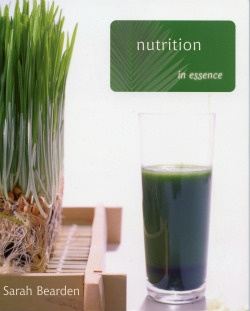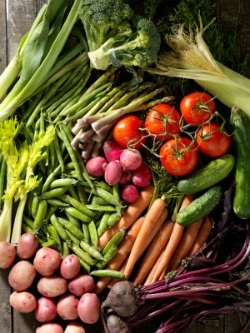Our General Guidelines for a Healthier Diet
 By: Sarah Bearden
By: Sarah Bearden
As a Nutritionist, I am often asked what kind of diets I recommend for people. The truth is, I am not a fan of diets as I find them restrictive, often unrealistic and I believe that every person is a unique individual and has dietary needs that might well be different from those of another person. Therefore, I believe that there is no one right diet for everyone! Having said that, I have found that there are general dietary guidelines which can be helpful for most people to follow if they are looking to change their diet for better health. I outline these guidelines in my book, "Nutrition in Essence" and my clients have told me that they feel better and have more energy when they focus on these guidelines when grocery shopping or when choosing what to eat.
When you make dietary changes to better your health, it will make the most difference if these changes can become a permanent habit. It is difficult though, to follow all of these 12 guidelines all the time and in some cases, it might even be impossible. So I begin my presentation of these guidelines to you with the phrase: "As much as possible…" so that you won't feel locked into a rigid diet and so you won't feel guilty if you cannot stick with these recommendations every day.
General Guidelines for a Healthier Diet:
As much as possible:
- Incorporate nutrient dense whole foods into your diet and include whole food helper foods in smaller amounts.
- Choose organic foods.
- Whether you eat meat or are a vegetarian, make sure most of your meal comes from plants.
- If you shop in a supermarket, buy food from the perimeter of the supermarket
- Eat foods that are locally grown and in season.
- Avoid sugar and refined foods.
- Eliminate bad fats from your diet and replace them with good fats.
- Limit irritating substances such as caffeine and alcohol and replace some of your consumption of these with water, herb teas and nutrient-rich broths like Magic Mineral Broth and Chicken Bone Broth or other kinds of broth.
- Make sure you are hydrated.
- Avoid using artificial sweeteners.
- Use portion control and do not skip meals.
- Everything in moderation! .
The first guideline refers to "whole foods". But what are whole foods? Many people are confused by this term and think it means any food that is or appears to be a healthy choice. However, people have very different ideas as to what healthy food choices are. Therefore, we have come up with our own definition.
Our definition of whole foods is this:
Whole foods are the edible parts of foods that are as close to their natural state as possible and are prepared in a way that retains enough nutritional value to be supportive of health.
 In my book, "Nutrition in Essence", I go over examples that fit this definition. It is obvious that an apple, a leek and a potato all fit this definition, because they can be picked and eaten in their natural state. I included the words "edible parts" in the definition because if you consider the example of the apple, you know that the edible part of the apple is most of the apple, but you might not want to eat the core and the seeds.
In my book, "Nutrition in Essence", I go over examples that fit this definition. It is obvious that an apple, a leek and a potato all fit this definition, because they can be picked and eaten in their natural state. I included the words "edible parts" in the definition because if you consider the example of the apple, you know that the edible part of the apple is most of the apple, but you might not want to eat the core and the seeds.
But what about organic apple juice? Is that a whole food? To make the juice, you need many apples, which are processed through a juicer. The juice is extracted and then the fiber is thrown away. The juice, though high in vitamins, will also be high in sugar because the natural fiber which would have slowed down the digestion of this sugar is gone. High amounts of sugar are not supportive to health. Therefore, a glass of apple juice is not as healthy a choice as a whole apple would be.
Do we have to eat all our foods raw and just as they are when they are picked or harvested for them to be "whole foods"? Not at all! If we look at the last part of the definition, "….prepared in a way that retains enough nutritional value to be supportive of health", we know that if we take the leek and the potato mentioned above, and we make a "leek and potato soup" out of them, our soup is a whole foods meal because we used all the edible parts of the vegetables and our soup can still be very healthy!
These are just a few examples of whole foods. Think about the foods and the meals you eat every day. Would they fit our definition? I will elaborate on each of the Guidelines, above, in subsequent articles. I'll define "nutrient dense" and "whole food helpers".
For the recipe for Magic Mineral Broth, go here. For my Chicken Bone Broth recipe, go here.
On the first day of our class: "Nutrition in Essence: Be Your Own Nutritionist!", we go over many more examples of whole foods and whole food meals and our "Guidelines For a Healthier Diet" in depth so that our participants can plan delicious whole food meal plans for themselves and their families.
To be advised when new articles or recipes are posted on this website, please sign up for the Roots to Health newsletter. You can sign up here.
I will explain more terms from this article such as "nutrient dense" and "whole food helpers" in part 2, coming soon...
Copyright: Roots to Health: Sarah Bearden, D.N. Med., M.S., CN






Add Comment